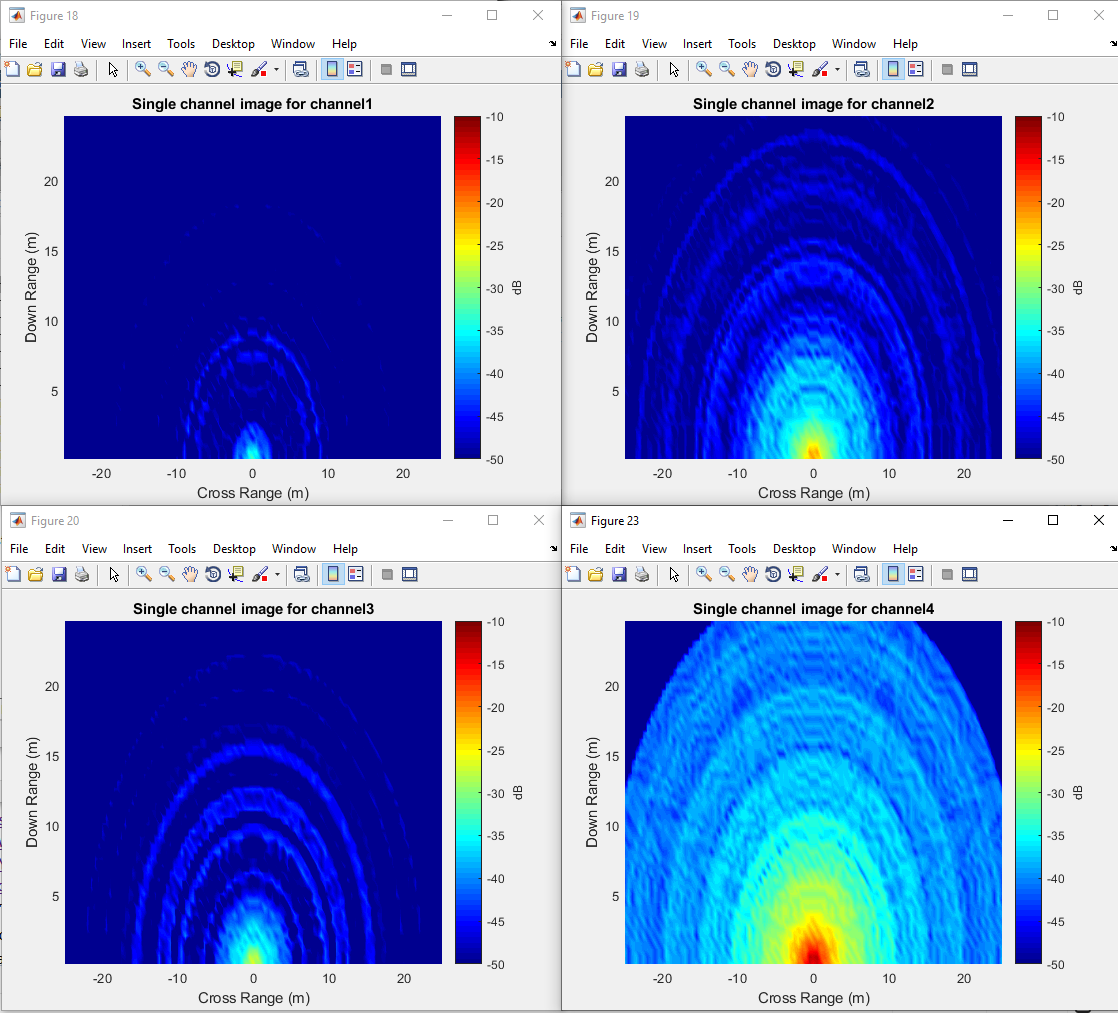Other Parts Discussed in Thread: AWR1243
While processing data collected with an AWR1243Boost we are noticing significant differences between the outputs of TI's software and our own processing. When using TI's tools we can see outputs that match our expectations of what we should see from our data collection. In particular, it appears all four channels are coherent and approximately gain matched. However, when we re-process the recorded digital I/Q in our own tools the same data shows that the channel-to-channel phase match is approximately random and a 20 dB difference between channels. It appears the device is "coherent" when run through TI's tools but incoherent when using the raw data. It appears TI's tools are able to apply a transfer function to the raw data before processing and displaying it to correct for the errors.
A calibration data file (containing hex values) appears to have shipped with TI's software. Does this mean that the AWR1243 does not meet the phase and gain specifications w/out the calibration data contained in that file? We purchased the AWR1243 specifically because we are using custom DSP that would not be possible with TI's other devices or TI's software. How do we make use of this calibration data without having to use TI's post-processing tools? Can TI provide a method for us to interpret the data in that file and the code necessary to turn that data into the correction factors necessary to phase- and gain-match the device?
If we can't use this file, does TI have a different piece of software that would allow us to run a new calibration and derive the transfer function to correct for the phase and amplitude errors? Can we get the "corrected" I/Q data out of TI's tools so that we can process it?


